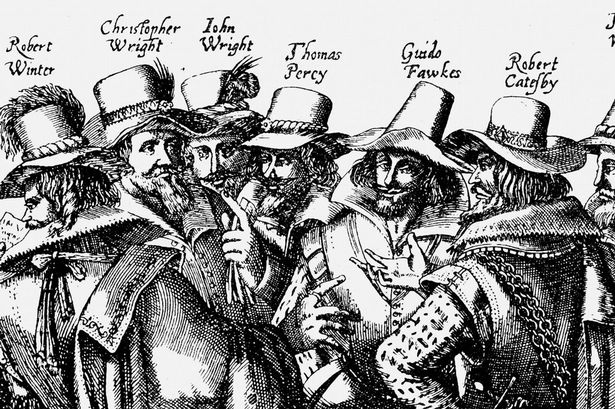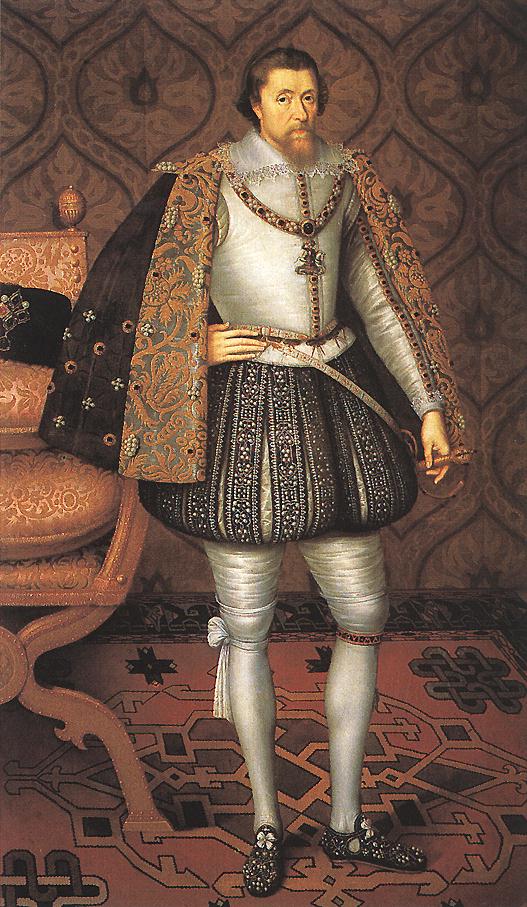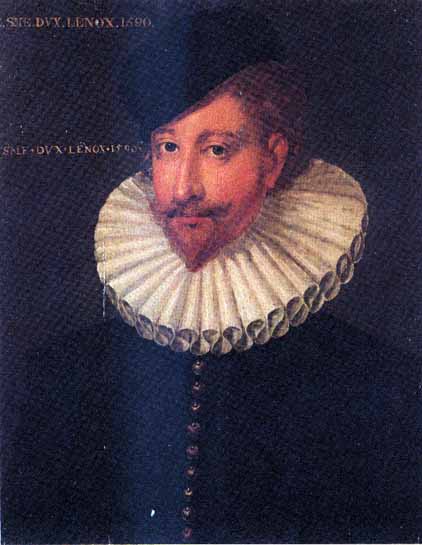Gay Fawkes Night?
By Adrian Gillan for www.bent.com
Blazing faggots! Over 400 years on, sparks fly as Bent’s Adrian Gillan explores King James I’s highly public gay affairs; plus a theory suggesting it may have been these – not just his views, nationality or religion – that prompted Guy’s famous failed 1605 plot. Oh, incendiary gay hate!

Amidst his much-flaunted scarce-hid gay liaisons, a popular joke amongst courtiers during James I’s reign (1603-25, though he was also King of Scotland since 1567) – and one that will hardly be lost on the average Bent reader – was: “Rex fuit Elizabeth: nunc est regina Jacobus” (“Elizabeth [his predecessor] was King: now James is Queen.”)

As a lanky Scots teen, James fell head-over-heals for an elegant French male red-head courtier, Esmé Stuart. The future king’s “protectors” were jealous of the copper-top’s influence and power over young James, and his red-maned mate was eventually forced to flee the country on pain of death. The two lovers never met again.

But once James achieved power, little could stop him. He arranged for George Gordon, sixth Earl of Huntley, to be elevated to the rank of Captain of the Guard and lodged in his own chamber – as close bodyguard, naturally. Huntley was, however, unhappily eventually tried for treason, for attempting to help dethrone James; and was subsequently executed.
Next up? Handsome Scots lad Robert Carr was perhaps the King’s most devoted young lover, first running beside James’ royal coach as a page-boy; then ending up as close confidante – by all accounts tending affectionately to James when he fell ill. Another unhappy ending though! Carr fell in love with, and married, one Lady Frances Howard, with whom he was found guilty of conspiring to murder another nobleman. Carr was sentenced to death. James did, however, issue a royal pardon, allowing his former lover to, instead, spend the rest of his life in disgrace and semi-poverty, as a country peasant.
James soon found another favourite in George Villiers – the handsome, chiselled, curly-locked son of a penniless Leicestershire squire whom he met in 1614. The pair probably had their first sex the following summer. Their romance is preserved to this day in extensive intimate love-letters. Created the Duke of Buckingham, Villiers – whose name is now aptly immortalised in the synonymous street next to London’s famous Heaven gay night club – also clearly profited financially and politically from his relationship; as ever, breeding courtly rivalry plus unrest throughout the land, even beyond his dear James’ death. He remained in royal favour, however, for the first three years of James’ son King Charles I’s reign, ‘til a disgruntled army officer assassinated him, by stabbing.

The Great Gay Gunpowder Theory
Some historians have suggested that James was in fact targeted by plotters at least partly because of his very public string of gay lovers, and not just because of his Scottish connections or Protestant faith; or since he believed oh-so-outrageously in the Divine Right of Kings. Hence – the theory goes – the Gunpowder Plot was, in part, an audacious failed act of gay hate!
And said plot may even yet further thicken!
Some historians go so far as to suggest that fanatical Catholic Guy was actually a “fool Guy”, knowingly set-up by queer King James and his crafty supporters in order to fail, thereby thereafter allowing James to unequivocally re-assert his authority; and help reverse his doubtless in-part-gay-induced unpopularity.
So, Guy Fawkes Night may thus, in fact, be our nation’s unwitting celebration of how an unpopular queer king luckily escaped a dastardly, partly anti-gay, act; or of how he even knowingly goaded on Guy in order to win over public sympathy after the infamous plot was exposed – not least so said public might “forgive” James his much vaunted and paraded homosexual shenanigans.
Either way: explosive stuff!
– ends –
